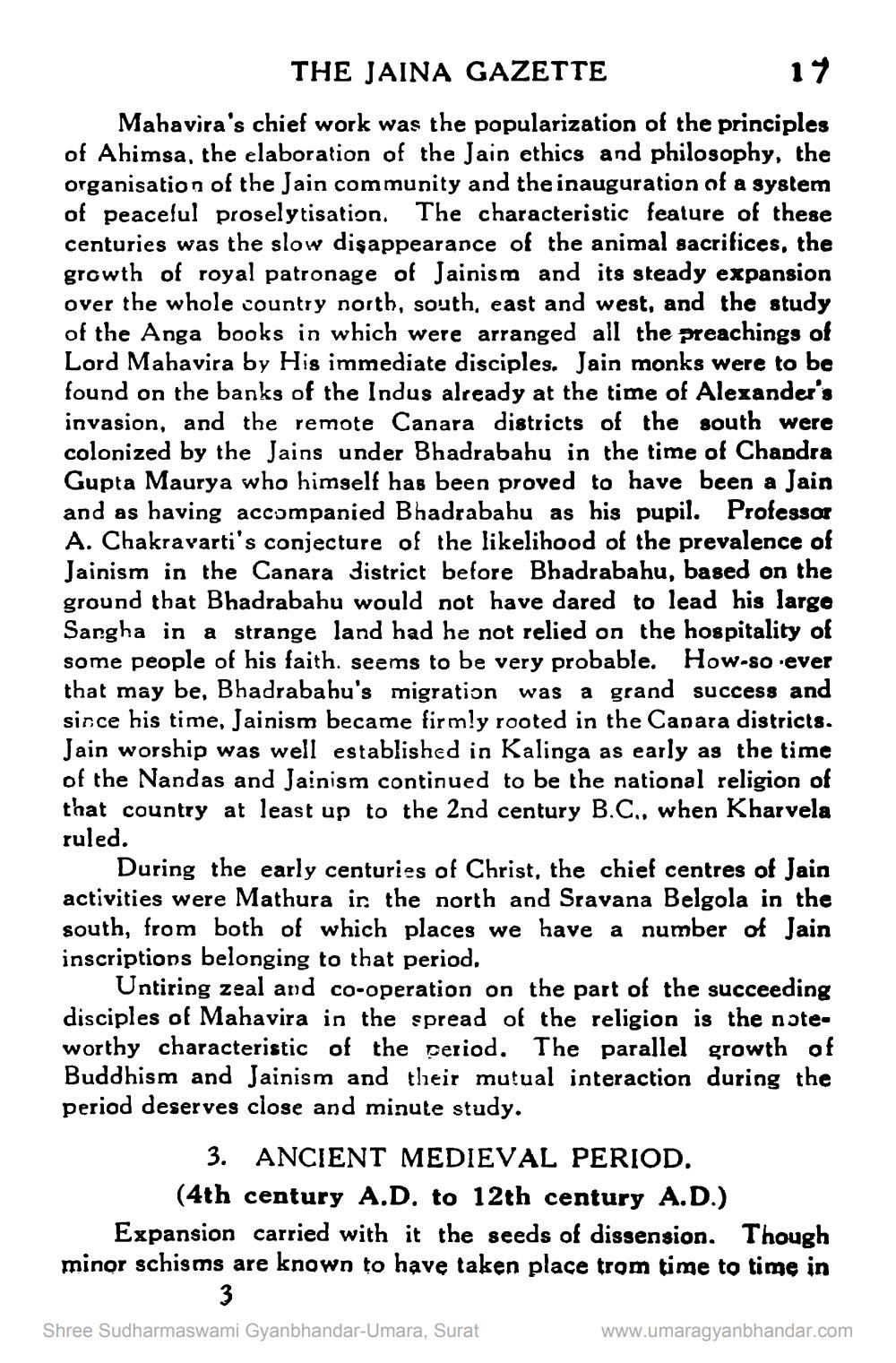________________
THE JAINA GAZETTE
17
Mahavira's chief work was the popularization of the principles of Ahimsa, the elaboration of the Jain ethics and philosophy, the organisation of the Jain community and the inauguration of a system of peacelul proselytisation. The characteristic feature of these centuries was the slow disappearance of the animal sacrifices, the growth of royal patronage of Jainism and its steady expansion over the whole country north, south, east and west, and the study of the Anga books in which were arranged all the preachings of Lord Mahavira by His immediate disciples. Jain monks were to be found on the banks of the Indus already at the time of Alexander's invasion, and the remote Canara districts of the sou colonized by the Jains under Bhadrabahu in the time of Chandra Gupta Maurya who himself has been proved to have been a Jain and as having accompanied Bhadrabahu as his pupil. Professor A. Chakravarti's conjecture of the likelihood of the prevalence of Jainism in the Canara Bistrict before Bhadrabahu, based on the ground that Bhadrabahu would not have dared to lead his large Sangha in a strange land had he not relied on the hospitality of some people of his faith. seems to be very probable. How-so ever that may be, Bhadrabahu's migration was a grand success and since his time, Jainism became firmly rooted in the Canara districts. Jain worship was well established in Kalinga as early as the time of the Nandas and Jainism continued to be the national religion of that country at least up to the 2nd century B.C., when Kharvela ruled.
During the early centuries of Christ, the chief centres of Jain activities were Mathura ir. the north and Sravana Belgola in the south, from both of which places we have a number of Jain inscriptions belonging to that period.
Untiring zeal and co-operation on the part of the succeeding disciples of Mahavira in the spread of the religion is the noteworthy characteristic of the period. The parallel growth of Buddhism and Jainism and their mutual interaction during the period deserves close and minute study.
3. ANCIENT MEDIEVAL PERIOD.
(4th century A.D. to 12th century A.D.) Expansion carried with it the seeds of dissension. Though minor schisms are known to have taken place trom time to time in
3 Shree Sudharmaswami Gyanbhandar-Umara, Surat
www.umaragyanbhandar.com




